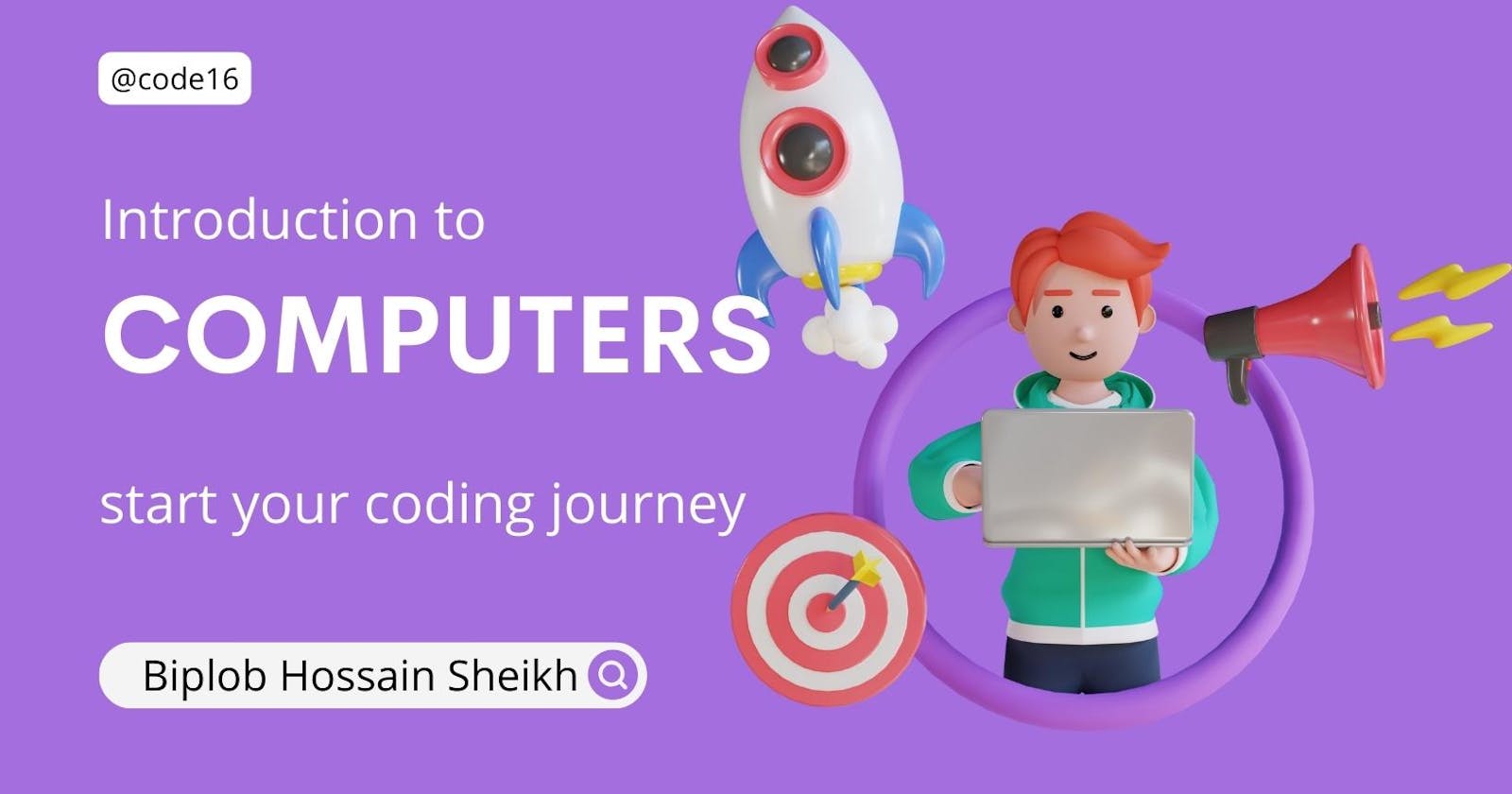Introduction to Computers: Understanding the Digital World
know the basics of computers
In today's digital age, computers play a pivotal role in nearly every aspect of our lives. From smartphones and laptops to servers and supercomputers, computers have become an integral part of our world. But have you ever wondered what a computer is and how it works? In this comprehensive guide, we'll explore the fascinating realm of computers, from their history to the basic components and their role in our modern society.
A Brief History of Computers
The history of computers is a journey from early mechanical devices to the powerful electronic machines we use today. Here's a condensed timeline:
1. Mechanical Calculators (1600–1800)
Blaise Pascal and Gottfried Leibniz developed mechanical calculators for arithmetic.
Charles Babbage conceived the "Analytical Engine," often considered the first mechanical computer.
2. Early Computers (1930s–1940s)
Konrad Zuse's Z3 (1941) is often considered the first electromechanical computer.
Colossus, created during World War II, was used for code-breaking.
3. First Generation Computers (1940s–1950s)
ENIAC (1946) and UNIVAC (1951) were among the earliest electronic computers.
These machines used vacuum tubes and punch cards.
4. Transistors and Integrated Circuits (1950s-1960s)
The invention of transistors led to smaller, more reliable computers.
IBM 360 (1964) marked the start of mainframe computing.
5. Microprocessors and Personal Computers (1970s-1980s)
The Intel 4004 (1971) introduced microprocessors.
The Apple I (1976) and IBM PC (1981) popularized personal computing.
6. Modern Computers (1990s-Present)
- The development of faster processors, graphical user interfaces, and the internet revolutionized computing.
What Is a Computer?
In its simplest form, a computer is an electronic device that processes data to perform various tasks. Here are its core components:
1. Central Processing Unit (CPU)
- The CPU is the brain of the computer, executing instructions and performing calculations.
2. Memory
- Computers have two types of memory: RAM (Random Access Memory) for temporary data storage and ROM (Read-Only Memory) for permanent data.
3. Storage
- Storage devices like hard drives, solid-state drives (SSD), and flash drives store data long-term.
4. Input and Output Devices
- Input devices (keyboard, mouse) allow users to input data, while output devices (monitor, printer) display or produce results.
5. Motherboard
- The motherboard connects and manages all computer components.
6. Software
- Operating systems (e.g., Windows, macOS, Linux) and applications (e.g., Microsoft Office, web browsers) make the computer usable.
7. Peripherals
- Extras like graphics cards, sound cards, and network cards enhance a computer's capabilities.
How Computers Work
Computers follow a series of steps to process data:
Input: Data is entered into the computer via input devices.
Processing: The CPU executes instructions, manipulating data as needed.
Storage: Data can be stored in RAM for quick access or on storage devices for long-term retention.
Output: The results are displayed or printed using output devices.
Control: The computer's control unit manages the entire process, coordinating components to complete tasks.
Types of Computers
Computers come in various forms to cater to different needs:
1. Personal Computers (PCs)
- Desktops and laptops for individual use.
2. Servers
- Powerful machines used to manage network resources and data.
3. Supercomputers
- Used for complex scientific calculations and simulations.
4. Mainframes
- Enterprise-level machines for large-scale data processing.
5. Embedded Systems
- Computers are integrated into everyday devices (e.g., smart appliances, cars).
The Role of Computers Today
In the modern world, computers have an impact on every industry and aspect of our lives.
Communication: email, social media, and video conferencing.
Entertainment: streaming, gaming, and multimedia production
Education: online learning platforms and research
Business: data analysis, inventory management, and e-commerce.
Science: research, simulations, and data modeling.
Healthcare: patient records, diagnostics, and medical imaging.
Transportation: navigation, traffic management, and autonomous vehicles
Computers have come a long way from their humble beginnings as mechanical calculators. They have evolved into incredibly versatile and powerful machines, shaping the way we work, communicate, and live. Understanding the basic principles of computers is not only essential for using them effectively but also provides a glimpse into the extraordinary technology that powers our modern world. Whether you're a computer enthusiast or a casual user, this knowledge empowers you to make the most of this digital age.

